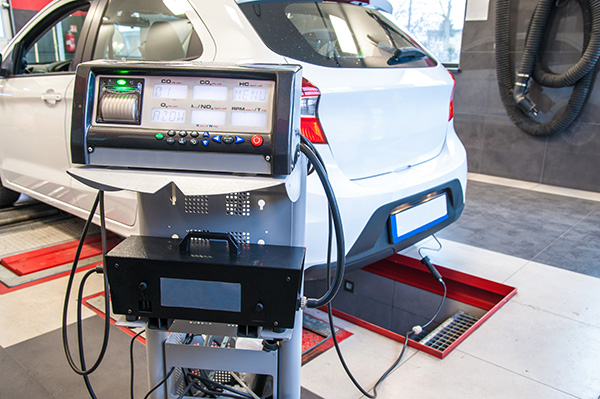
In states like California, where air quality is a serious concern, smog checks are a routine part of vehicle ownership. If you've ever wondered why your car has to pass a smog inspection, you're not alone. Many drivers view it as just another hurdle to overcome. However, in reality, these tests play a crucial role in improving air quality and ensuring that cars on the road do not produce harmful emissions.
Whether you're a longtime resident of Walnut Creek or new to the state, it’s important to understand what’s being inspected during a smog check, why it matters, and what can cause a vehicle to fail.
What Happens During a Smog Check
Smog checks are designed to evaluate how efficiently your vehicle burns fuel and how many pollutants it releases into the atmosphere. The test typically includes two main components: a visual inspection and an emissions test.
During the visual inspection, the certified technician checks for tampering with emissions-control components. This includes verifying that the catalytic converter, gas cap, PCV valve, and other related systems are present and properly connected. They’ll also inspect hoses and vacuum lines for cracks or disconnections that could impact emissions performance.
The emissions test itself may vary depending on your vehicle's age and type. For many vehicles, it involves connecting your car to a diagnostic system that reads data from onboard sensors. This helps identify any issues with the fuel injection system, oxygen sensors, or evaporative emissions systems.
Older vehicles undergo a tailpipe emissions test, where we insert a probe into the exhaust pipe to directly measure pollutants such as hydrocarbons (HC), carbon monoxide (CO), and nitrogen oxides (NOx).
Why Smog Checks Are Required
The purpose of smog testing isn’t just to inconvenience car owners—it’s to reduce the amount of harmful gases being released into the environment. Cars are a significant source of air pollution, and emissions regulations have been implemented to help improve public health and conserve natural resources.
In places like Walnut Creek and the greater Bay Area, vehicle emissions contribute to ground-level ozone, smog, and respiratory issues. Smog checks help identify vehicles that are emitting more pollution than they should so they can be repaired before causing further environmental harm.
This testing also helps identify issues that may impact fuel economy or long-term engine performance. A failed smog check often indicates an underlying issue that, if left unchecked, could lead to more expensive repairs down the line.
Common Reasons Vehicles Fail Smog Tests
Failure can be due to a range of issues, some of which are relatively simple to fix. A loose or damaged gas cap, for instance, can allow fuel vapors to escape and trigger a failure. A worn-out catalytic converter, faulty oxygen sensor, or malfunctioning EGR valve can all cause emissions to spike.
Check engine lights are another key factor. If your car's check engine light is on at the time of the test, it's an automatic failure. Even if the car seems to run fine, that light indicates a problem in the emissions control system.
Old or contaminated engine oil, dirty air filters, or improperly performed repairs can also contribute to high emissions levels. That’s why it’s important to keep up with regular maintenance and address small issues before they become big ones.
How to Prepare for a Smog Check
If your vehicle is due for a smog test, there are a few things you can do to increase the chance of passing. First, make sure the check engine light is off. If it’s been recently cleared, drive the vehicle for at least 50 to 100 miles before testing to allow the onboard computer to complete its self-monitoring cycles.
Second, get an oil change if it’s due, and replace dirty air filters. These small steps can make a big difference in reducing emissions. Lastly, make sure your tires are properly inflated and that your vehicle is fully warmed up before the test. A warm engine tends to perform better and produce fewer emissions during the test.
Trust Roesbery Car Care Walnut Creek for Smog Check Readiness
If you’re unsure whether your car is ready for its next smog check or if you’ve already failed one, the team at Roesbery Car Care Walnut Creek can help. Our technicians can diagnose and repair emission-related issues, preparing your car to meet state requirements.
Call Roesbery Car Care Walnut Creek in Walnut Creek, CA, today to schedule a smog check or pre-test inspection. We'll help ensure your car runs clean and remains compliant with California emissions standards.